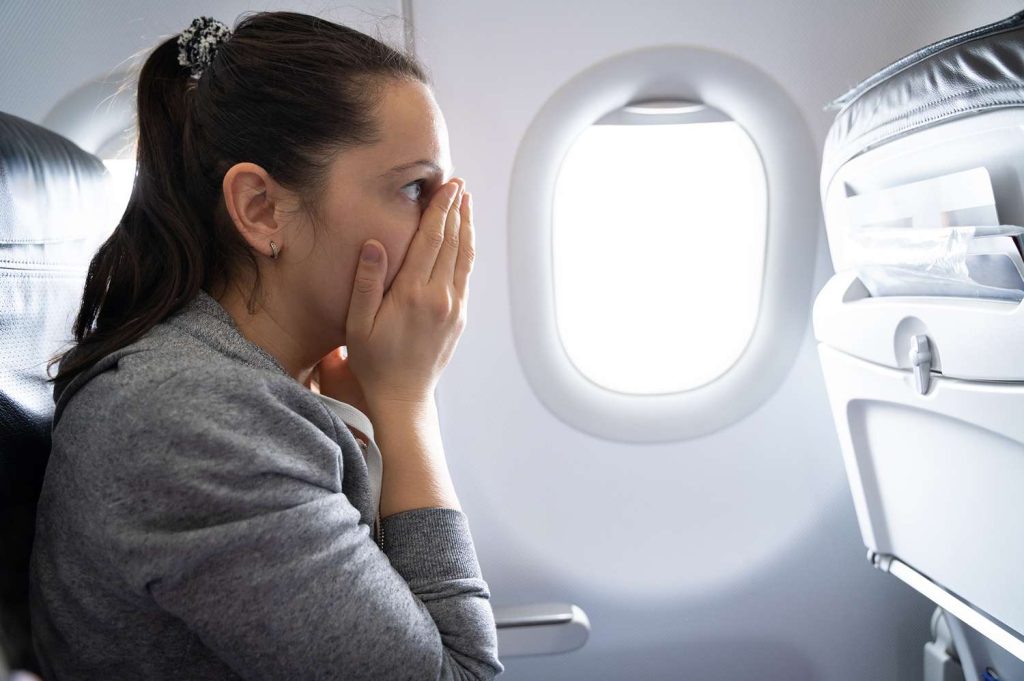:max_bytes(150000):strip_icc():format(jpeg)/TAL-smelling-somthing-on-airplane-GASSYONPLANE0125-353d7eadcf2140c18f5eb4f8060106bd.jpg)
We’ve all been there. You know, when you’re happily flying at 30,000 feet to your next vacation destination when all of a sudden … you feel a rumble in your tummy. You don’t think much of it until that rumble gets bigger and bigger and bigger, and then, finally, you have to let go of a little toot. We’ve all been there, right? Don’t lie, because according to science, we all get gassy on planes, and that’s totally OK.
Recently, a Reddit user re-shared a 2013 study published in the New Zealand Medical Journal by a team of Danish and British gastroenterologists, outlining flying’s flatulence problem, and it got us thinking about the fact that it’s fine that we pass gas every now and then while hurtling through the air. And we wanted to share the science as to why you really can’t do anything about it, no matter how hard you clench your butt.
“The release of intestinal gases (i.e., flatulence) can constitute an embarrassing problem both for the person farting and for persons in the near presence due to sound and odor. Intestinal gas may also cause physical discomfort or even pain for the person farting,” the authors of the study wrote in their introduction. “When performed in a small closed environment over longer periods of time, e.g., on a spacecraft, it may even, in the worst case scenario, cause explosion danger.”
The authors explained that you really do get gassier on flights, likely due to the pressure inside an airplane cabin, which falls as the airplane increases in altitude. They demonstrated this by showing an empty water bottle, which contracts on land and expands in the air. It was this very water bottle scenario on a flight that inspired Jacob Rosenberg, now a clinical professor at the University of Copenhagen. “When we landed, my belly had grown. That led me to speculate what had happened. When I got back to work I discussed with two of my students, and we simply came up with the idea for the paper,” he shared with Stuff in 2022.
Modern aircraft are somewhat able to counteract this contraction and expansion “by the use of pressurized cabins, but these are only able to maintain a pressure no lower than 565 mmHg (equivalent to an altitude of 8000 feet),” Rosenberg and his fellow authors explained in the study. “This fall in pressure in the cabin will, according to the ideal gas law, expand the volume proportionally of any existing gas (in this case intestinal gas).”
As for how you should deal with gas on a plane, the authors had a few suggestions. First, you could try “holding back,” however, it holds significant “drawbacks for the individual such as discomfort and even pain, bloating, dyspepsia, and pyrosis just to name but a few, resulting abdominal symptoms.” Additionally, this method requires “concentration to maintain such control” and will likely add more stress to the body.
Then, there’s the other method: “Just let it go.” While the authors note that, sure, it could cause a momentary … stink … it’s better than feeling ill for an entire flight.
There are other solutions, such as airlines adding active charcoal in the passenger seats, which has been shown to “effectively limit the escape of sulfur-containing gasses (odor) into the environment.” The team also noted that wearing certain textiles offer “low fart permeability (e.g., leather pants),” meaning the fart cannot escape through the fabric.
And if you’re ever sad about having to sit in economy class, remember this: first class could be the fartiest place of all. That’s because, as the authors note, first-class seats are often covered in leather, which repels the fart, “thereby creating a less comfortable experience.”








